Cyprus is well known for its religious culture and historical churches and monasteries. Many of the churches date back to the Byzantine period and are inscribed on the UNESCO World Heritage List. We have chosen some of the top monasteries in Cyprus for you to visit. Some of them are still the residences of monks οr nuns which will take you in with a warm welcome. This is not just a religious and historical journey but also a journey of meditation, faith and relaxation.
Agios Nikolaos ton Gaton Convent – St. Nicholas of the Cats Convent
Located on Cape Gata, 15km west of Lemesos (Limassol) and south-east of Akrotiri Salt Lake, the monastery of Agios Nikolaos ton Gaton (St. Nicholas of the Cats) is possibly the oldest monastery in Cyprus. The monastery chapel dates back to the 14th century and was abandoned in the 16th century. It was reinstated by Orthodox nuns in 1983.
According to tradition, the monastery was founded by St. Helena, the mother of Emperor Constantine the Great, who left a piece of wood from the Holy Cross at the site. During that period, Cyprus experienced a severe drought, forcing many people to flee the cape and the area became infested by snakes.
Constantine the Great sent a commander called Kalokeros to Cyprus to release thousands of cats in order to rid the area of the snakes, and thus the cape was saved and came to be known as Cape Gata (Cape Cat).
Read More: Agios Nikolaos ton Gaton Convent – St. Nicholas of the Cats Convent

Machairas Monastery
Located on the slopes of Kionia, in the valley of Machairas mountains, Machairas Monastery is one of the most famous on the island and houses the miraculous icon of Panagia (the Virgin Mary) of Machairas, which is attributed to Agios Loukas (Apostle Luke) the Evangelist.
According to legend, an unknown hermit sneaked the icon into Cyprus during the iconoclasm years (between the 8th and 9th century AD) and kept it in his cave until his death around 1145. Blessed with the divine grace, the hermits Ignatios and Neophytos, discovered the cave – which was obscured by bushes – and were able to reach it by cutting down the undergrowth with a knife given to them by divine hand. As a result, the revealed icon was given the name ‘Machairiotissa’ from the Greek word for ‘knife’ – ‘machairi’. The monastery was built on the same spot, also taking the name.
Read More: Machairas Monastery
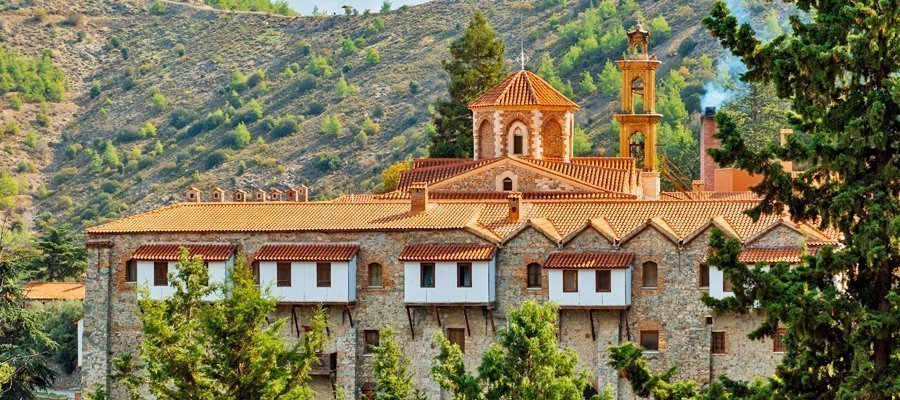
Agios Georgios Alamanos Convent
Located 20km east of Lemesos (Limassol) on the road to Nicosia (Lefkosia), Agios Georgios Alamanos was originally founded as a monastery in the 12th century, and now functions as a convent. Aside from performing their religious duties, the nuns pass their time with icon painting, the cultivation of flowers and herbs, and the production of honey.
Read More: Agios Georgios Alamanos Convent
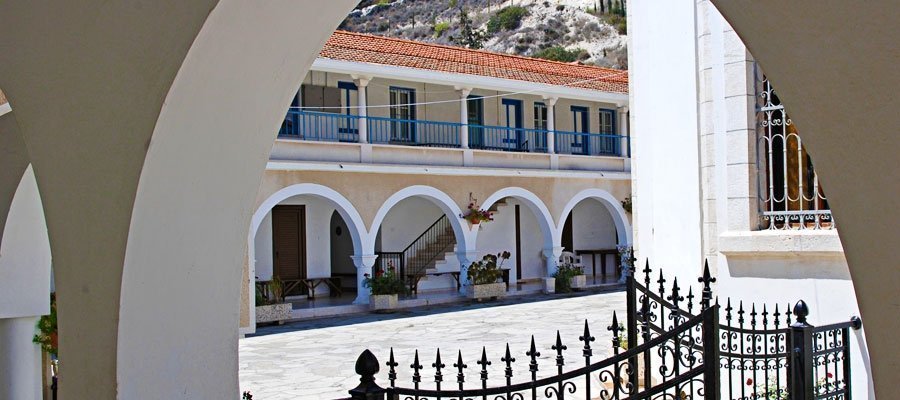
Agios Neophytos Monastery
Located about 9km north of Pafos (Paphos), the monastery of Agios Neophytos was founded by the Cypriot recluse and writer Neophytos in the second half of the 12th century, in what used to be a secluded location at the head of the picturesque valley.
The hermit carved a cave out of the mountains called the ‘Enkleistra’, which is covered with some of the finest examples of Byzantine frescoes that date back from the 12th to the 15th centuries. The monastery has a noteworthy ecclesiastical museum and its later church also contains some of the finest Post-Byzantine icons dating to the 16th century.
Read More: Agios Neophytos Monastery
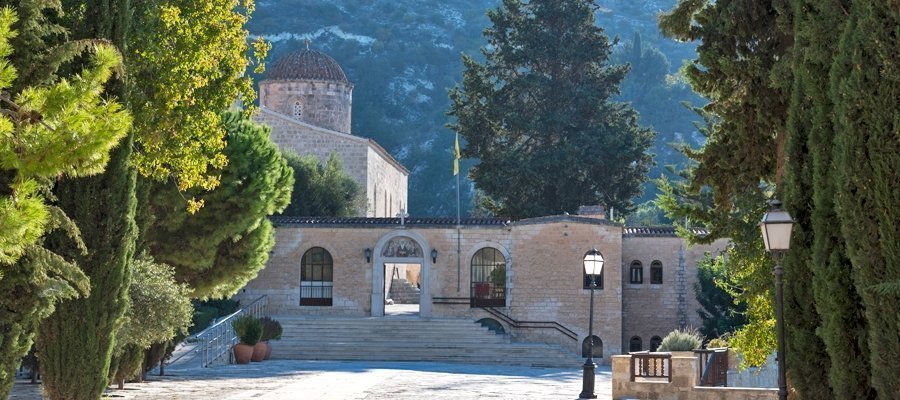
Monastery of Agios Ioannis (St John) Lampadistis, Kalopanagiotis
In the central part of Cyprus, in the mountains of the Troodos range, some of the most important monuments of the history of Byzantine painting have survived. They consist of painted churches which have preserved to this day brilliant examples of various trends of the Byzantine and post-Byzantine monumental art, from the 11th to the 19th century. Ten of these churches have been so far granted World Cultural Heritage status by UNESCO.
The monastery of Agios Ioannis Lampadistis is situated in a central area of the Troodos mountain range, in the valley of Marathasa. It is built on the east bank of the river Setrachos, opposite of the village of Kalopanagiotis. In 1985 it was inscribed on the UNESCO World Heritage List which includes nine other painted Byzantine churches of the Troodos range.
Read More: Monastery of Agios Ioannis (St John) Lampadistis
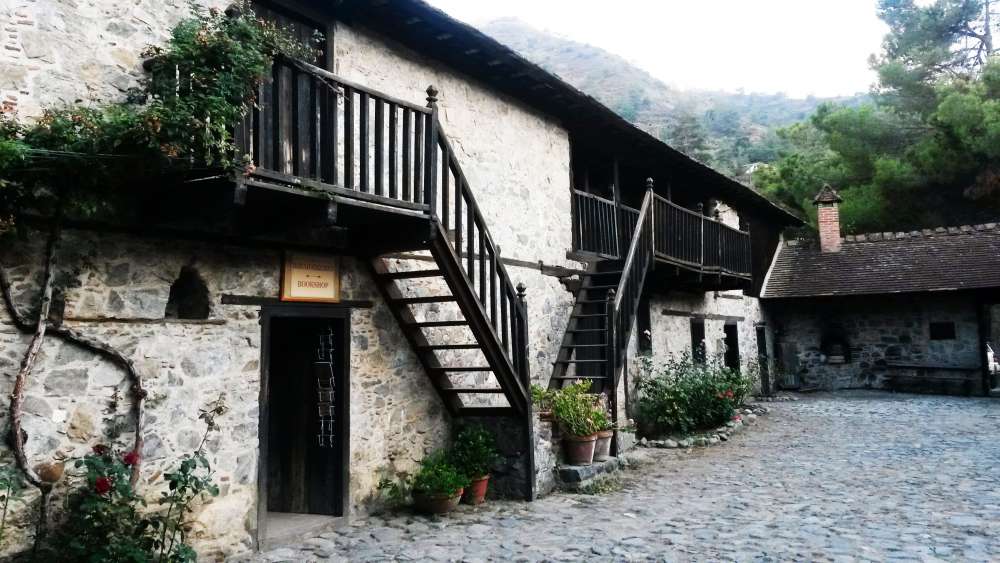
Stavrovouni Monastery
Perched on a rocky peak, 750 metres above sea level, legend tells that Stavrovouni Monastery was founded in the 4th century by St. Helena, mother of Emperor Constantine the Great, who left a relic of the Holy Cross at the monastery.
The monks have strict rules akin to those at Mount Athos in Greece. Women are not permitted to enter the monastery, nor is the use of camera or video permitted. Men visiting must be appropriately dressed.
In contrast, the monastery of Agia Varvara on the foothills of Stavrovouni is accessible to all visitors, and the monks here are known for their iconography skills.
An impressive annual ceremony and festival is held at Stavrovouni Monastery on September 14 to mark the day of the Raising of the Holy Cross.
Read More: Stavrovouni Monastery
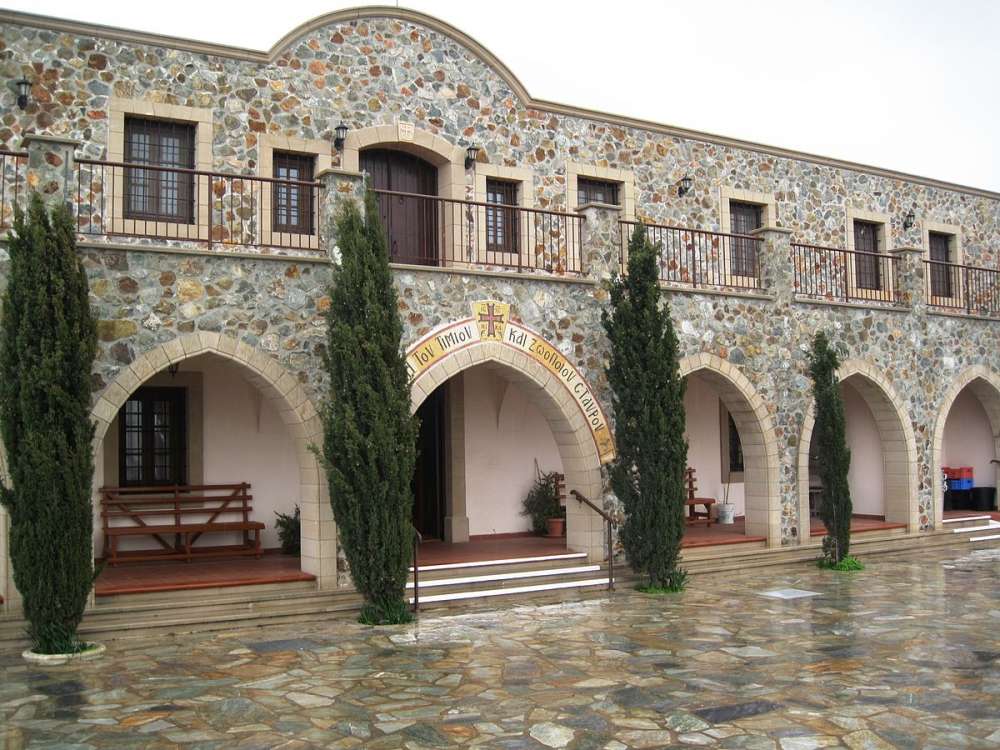
The Monastery of Saint Herakleidios
The Monastery of Saint Herakleidios is build in the southeast of the village of Politiko, in the province of Nicosia, at a location near the ancient city of Tamassos. The Monastery is dedicated to Saint Herakleidios, a pupil of the Apostles Paul, Barnabas and Mark, who was ordained by them as the first Bishop of Tamasos.
Read More: The Monastery of Saint Herakleidios
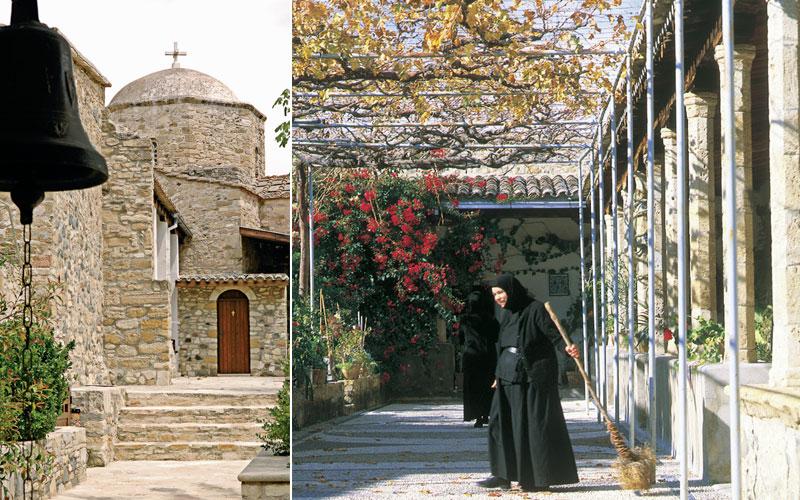
Agios Minas Convent
This 15th century convent near the village of Lefkara consists of a church, cloisters and other monastic buildings. Besides performing their religious rites, the nuns also paint icons.
The convent probably began as a Dominican establishment. The church is the common mix of Byzantine and Gothic styles, with a pointed vault with traverse ribs and side porticos.
On the north and south walls are two large paintings of Agios Georgios and Agios Minas dated 1757. Eighteenth century monastic buildings surround the church, with cloisters to the west.
Read More: Agios Minas Convent
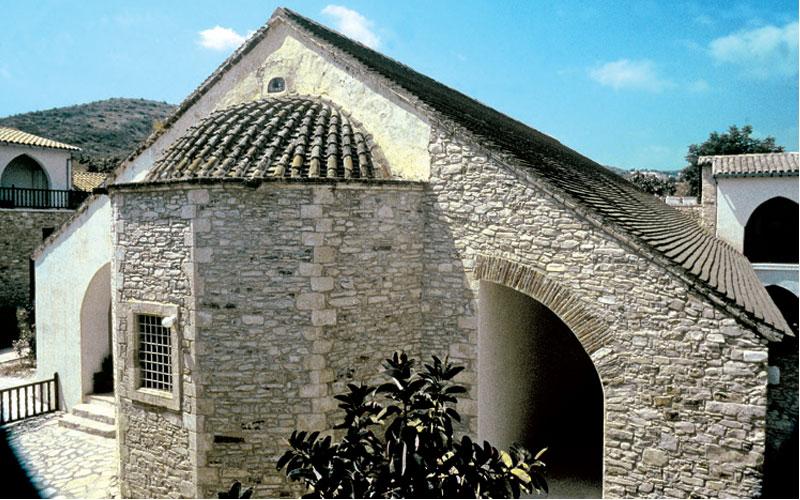
Courtesy of the CTO






